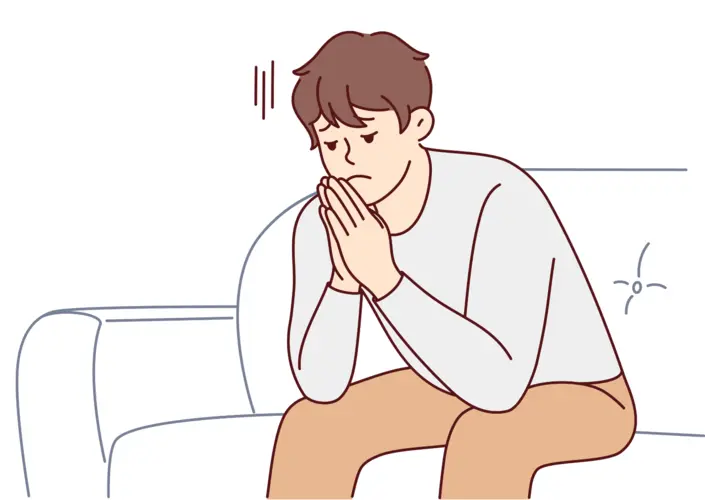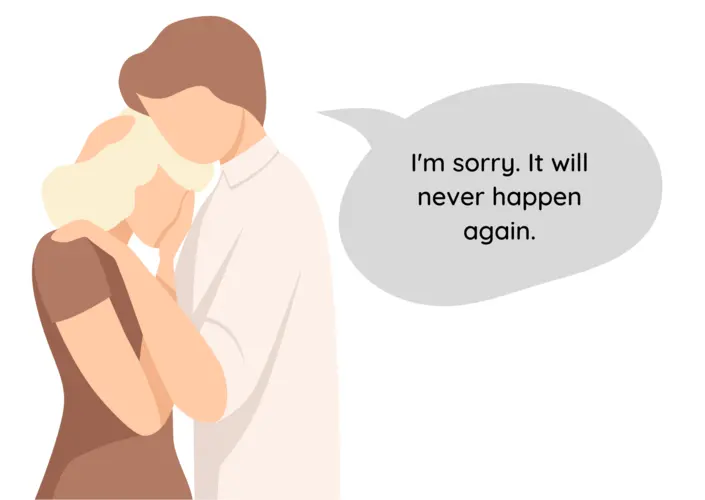A common question we get from members of our community who are unsure about the nature of their relationship is, “How can you tell if a bond is trauma or love?”
To know if a bond is trauma or love, assess your attachment to the bond, identify the patterns within the bond, examine your feelings towards the bond, evaluate the bond’s effect on your self-esteem, determine if the bond causes isolation or growth, and think about your future with the one you’re bonded with.
In this article, I will explain these six steps to help you better understand the difference between bonds rooted in trauma and bonds rooted in love.
Step 1: Assess Your Attachment to the Bond
A trauma bond usually forms in relationships that have a toxic pattern.
Think of it like a roller coaster: there are lows, where the target experiences abuse, but there are also highs where they experience brief moments of affection or intimacy.
Because these moments of warmth come unexpectedly, it becomes challenging for the target to leave the relationship.
Because of this, they start clinging to those intermittent moments of kindness from the abuser, hoping for more, and often mistaking them as genuine love.
Over time, the target can end up stuck in this toxic cycle because they crave the moments of warmth from the person causing them pain, among several other factors.
The bond feels very intense, and it’s rooted in pain and inconsistency.

On the other hand…
A love bond is like a peaceful river, flowing steadily without violent disruptions.
Of course, there will be good and bad days, but there aren’t any drastic ups and downs.
This type of bond thrives on mutual respect and understanding, and both parties involved prioritize each other’s well-being, creating a foundation of trust.
In addition, within bonds held together by love, acts of love, care, and support are far more consistent.
Because of this, love bonds evolve from shared experiences, trust, and a genuine concern for one another, and they are stable, comforting, and nurturing.
Step 2: Examine Your Feelings Towards the Bond
In a trauma bond, the emotional experience is unsettling.
Individuals often feel constantly on edge, and there’s an ongoing fear of upsetting the other person (the abuser).
This causes tremendous levels of anxiety.
Over time, this anxious state can make the trauma-bonded person feel trapped as if they’re in a room with no exits.
In contrast, a love bond feels stable and reassuring.
It brings feelings of safety and a dependable sense of security.
There’s a mutual affection where both parties feel valued and cared for, creating an environment of trust and ease.
Step 3: Identify the Patterns within the Bond
In a trauma bond, the interaction between the people involved typically follows a repetitive, draining, and toxic cycle.
First, harm or pain is caused, which can be emotional, physical, or both.
After this harm or pain, there is typically a period of reconciliation.
The person causing harm could apologize, maybe even shed tears, promise never to repeat the behavior, or display unexpected moments of kindness.

These gestures can give a glimmer of hope to the person being abused.
However, the reality is that the cycle usually returns to the starting point, with the harmful behaviors resurfacing, leaving the target in a loop of harm/pain and momentary relief.
A love bond has a much healthier pattern.
While no relationship goes without disagreements or challenges, confrontations are approached much differently in love bonds.
In a love bond, both parties typically lean into open communication when issues arise.
Instead of blame or avoidance, there’s understanding and empathy.
They engage in mutual problem-solving, focusing on resolution and growth rather than winning an argument.
Step 4: Evaluate the Bond’s Effect on Your Self-Esteem
Within a trauma-bonded relationship, there’s a devastating impact on self-esteem.
The constant exposure to harm and negativity erodes the sense of self-worth of the trauma-bonded person.
Over time, they often start struggling with feelings of worthlessness and question their value.
What’s even more unfortunate is when they begin to internalize this negativity, leading to a belief they somehow deserve the abuse or that it’s their fault.
Unfortunately, the bond within trauma-bonded relationships diminishes the target’s inner light and creates tremendous self-doubt and self-loathing.
Suggested Reading: 10 Ways to Build Self-Esteem After Narcissistic Abuse
Now, a love bond, on the other hand, acts as a pillar of support and affirmation.
Being in such a bond feels like having a steady hand lifting you and helping you recognize your worth.
Healthy love celebrates the essence of who you are, reinforcing the good and helping navigate the bad.
As a result, individuals in a love bond often experience a boost in their self-esteem because they feel valued, respected, heard, understood, and cherished.
Step 5: Think About Your Future with the One You’re Bonded With
In trauma-bonded relationships, the future often seems uncertain and stressful.
There’s a constant hope the person causing harm will change, even though there isn’t any reliable evidence that shows any sign of it.
Suggested Reading: 9 Reasons Narcissists Use Future Faking
In a relationship bounded by love, the future is seen through a much more reassuring lens because there’s a shared excitement for what’s to come.
People who share this type of bond typically plan together, set mutual goals, and look forward to creating more shared experiences.
When they think about the road ahead (the future of their relationship), they are excited, hopeful, and have a healthy level of certainty about it.
Step 6: Determine Whether the Bond Causes Isolation or Growth
In a trauma bond, there’s a noticeable trend towards isolation.
Suggested Reading: 5 Ways That Narcissists Isolate You
If you are trauma-bonded to someone, you may find yourself increasingly distanced from your lines of support (family/friends/coworkers/etc.)
This could be because the person causing you harm intentionally creates barriers or seeds of doubt about your lines of support.
Or it might be that you are withdrawing because of feelings of shame, confusion, or a desire to protect loved ones from the relationship’s chaos.
Therefore, trauma-bonded relationships quickly become a shrinking space where the world seems to revolve only around the relationship.
In a relationship bounded by love, there is growth, not isolation.

What I mean by this is that there’s an active encouragement to nurture existing connections and even form new ones.
It’s a bond where the other person celebrates your achievements and stands beside you in mutual endeavors.
Together, you both branch out, exploring new hobbies, making new friends, and achieving personal and shared goals.
It’s like having a partner-in-crime for life’s big and small adventures.
What Should You Take Away from This Offer?
Now that you better understand some of the key differences between trauma and love bonds, use the knowledge you’ve gained to reflect on your bond.
Doing this will help you determine whether you have a bond held together by trauma or love. Thank you for reading this article. I hope it brought you value!
About the Author

Hey, I’m Elijah.
I experienced narcissistic abuse for three years.
I create these articles to help you understand and validate your experiences.
Thank you for reading, and remember, healing is possible even when it feels impossible.
